Rainwater is sometimes a very valuable natural resource to be scattered left and right. Therefore, modern storm sewers are becoming more complex, and often equipped with special elements designed not only to minimize the negative effects of a storm, but also to effectively collect water.
Classic storm sewer device
basis storm sewer constitutes a system for directing and distributing water. In a simplified version, storm sewers include the following elements:
- Pipe. Most often laid in the ground and covered with a layer of turf, concrete or a hard surface of asphalt and paving slabs;
- Drainage channels or trays. The most important element of storm sewers, from correct location catchment depends effective removal water from the surface of the footpath or platform at the front door;
- Filtering and distribution elements. Their participation in the operation of storm sewers is imperceptible, and most people are not even aware of their existence, but they are critically important for the normal operation of the entire system.
Important! Rainwater drainage not only and not so much helps to effectively drain water, but above all, it protects the soil and foundation from oversaturation with water.
The main elements of storm sewers
All elements of storm sewers are equally important for the effective removal of water from the surface of the site. Failure or abnormal operation of any of the above elements can reduce throughput sewer system to a minimum.
Device for receiving storm water flows
Rain inlets or, more correctly, water inlets and storm sewer trays, gutters that serve to collect water flows on the surface of the earth, are the most vulnerable to mechanical impact from feet, wheels, vehicles, even icicles and freezing ice. Water inlets are most often made in the form of a rectangular or cylindrical box made of plastic or fiberglass fittings.
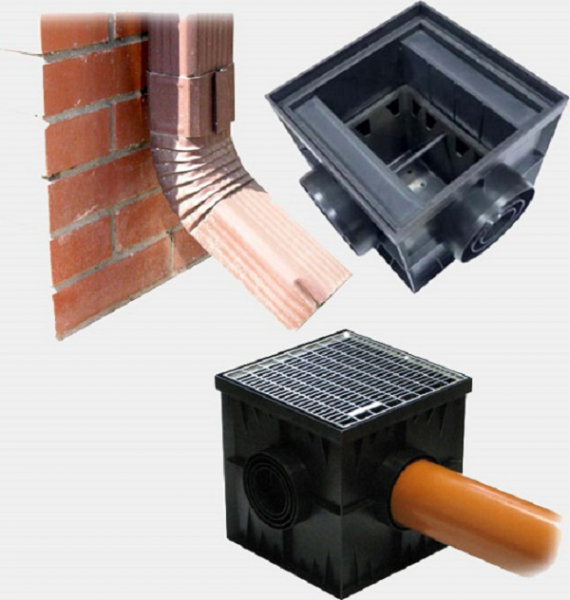
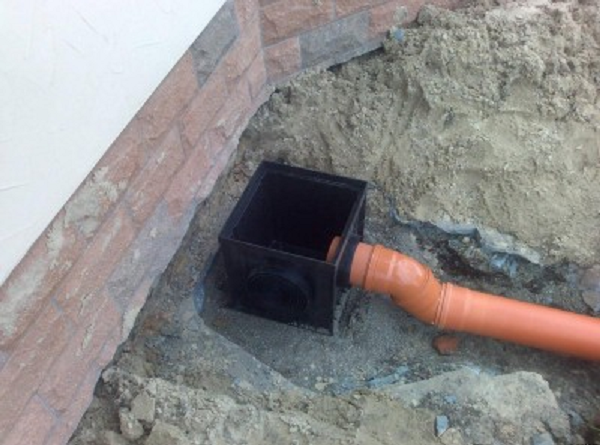
They are installed directly under the downspout of the downspout and serve to receive the flow of rainwater collected by the gutter system. The inlet is always closed with a metal or fiberglass grate. A hole is made in the side wall where the drain pipeline is connected. IN individual structures water intake is provided additional element for filtering large pieces of debris, tree branches, chips, small pebbles. Sand and small particles of dirt are poorly retained by this element. Often even experts are confused and believe that this is a sand trap for storm sewers.
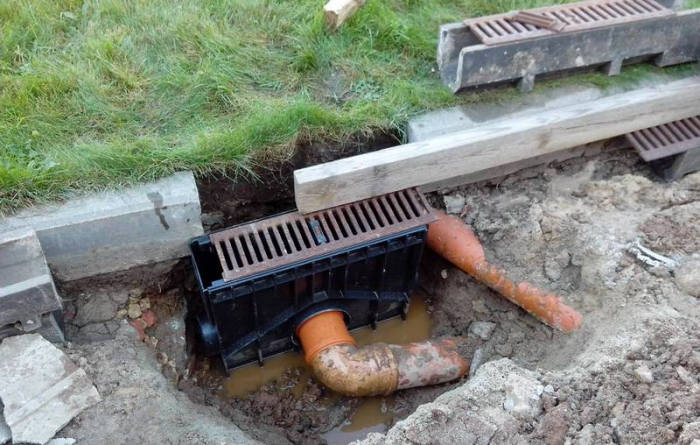
Stormwater inlets must provide a shock-free intake of streams of water without splashing, even if part of the inlet is covered with leaves or pieces of ice. The condition of part of the foundation and the wall of the house depends on the efficiency of this element of the storm sewer.
In addition to water intakes, rain sewer trays, or gutters, are engaged in collecting water. Most often they are installed along paved walkways. Areas and paths paved with paving slabs. Incorrect or inefficient work leads to swelling of the masonry due to frozen water in the sand bed.
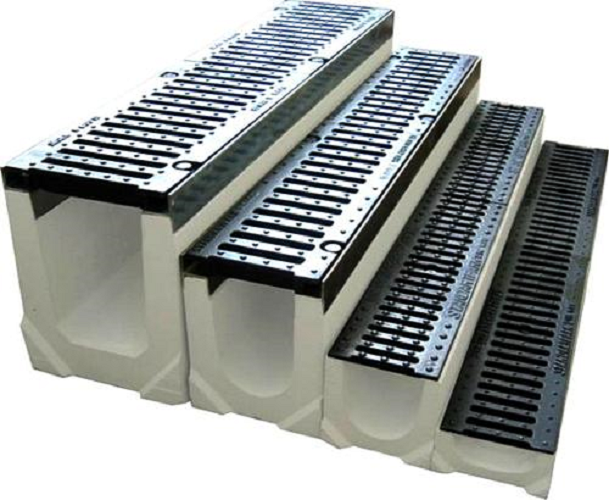
Trays for storm sewers are long plastic gutters laid directly on a sand cushion in the ground and covered with a protective lining with holes on top. A prerequisite for laying the trays is to observe the drain slope in the direction of the receiving pipe. In some cases, storm sewer trays stop working efficiently if people step on the installed gutters or vehicles run over. To avoid this, lay out a stone or tile border on the sides of the tray.
The lining can be plastic or slatted, but the latter option is used less frequently due to poor ability to retain large debris and dirt entering the sewer system.
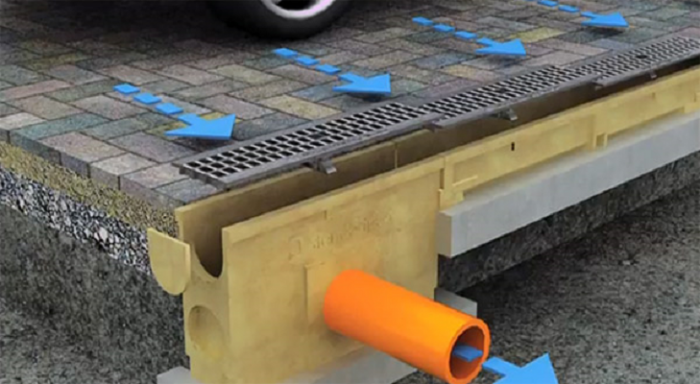
In addition to trough systems, point water inlets are also used in rainwater collection systems. These elements are designed to collect rainwater in a certain area where it is not possible to install gutters or trays. Most often, this is a concrete platform, on the surface of which there are slopes and a grid of profiled grooves for water drainage.
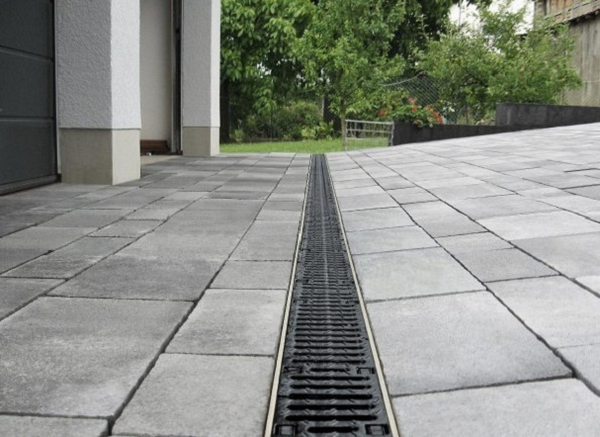
A separate element in rainwater harvesting systems is a receiving box or tray installed directly in front of the front door to the house. Such a device is used to capture rain and storm water that enters the porch entrance area. By design, the pallet corresponds to the device of the storm water inlet, but differs in size.
Prefabricated, distribution and filter elements
All catchment elements of rainwater collection systems direct flows through pipes to the places of its collection, settling, filtration and, if necessary, discharge to the central rainwater drainage. The standard today is the use of PVC or polypropylene corrugated pipes. The diameter of the pipeline, depending on the load, can vary from 100 to 200 mm. This version of the pipe has great flexibility, resistance to frost, clogging, perfectly tolerates any subsidence or soil movement without destruction.
In addition to polymer, asbestos-cement pipes are used. They are highly resistant, but their use is currently limited due to the presence of asbestos fiber in their material. cast iron, steel, ceramic pipes almost never used because of the high price.
Mandatory element modern systems collection of rainwater is considered a sand trap, freeing water from smallest particles sand, dust and dirt. In fact, this design is a large container in which rainwater settles and separates into sediment and clean water. The design provides for the removal of sediment and contaminants. Less often, vortex sand traps are used, in which grains of sand and the smallest gravel are released from the storm stream during the passage of the annular chamber.
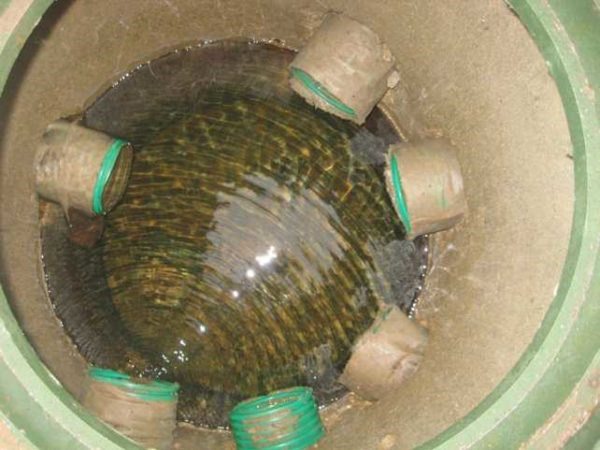
In some cases, in addition to the sand trap, a filter can be installed to separate oil products, oils, heavy organic substances that are insoluble in water. Typically, such elements are a mandatory attribute of storm sewers for gas stations, parking lots, auto repair shops, and are rarely used for domestic purposes.
The distribution well is considered the most expensive and overall element of rainwater collection systems. This device is a barrel-shaped container to which pipelines from water collection devices in a certain area are connected. Depending on the size of the plot, 2-3 distribution wells can be installed in one household. This element is buried in the ground in such a way that the water column in the tank is lower in level than the pipelines connected to it. In this case, the collected water will not flow from the well back into the storm sewer.
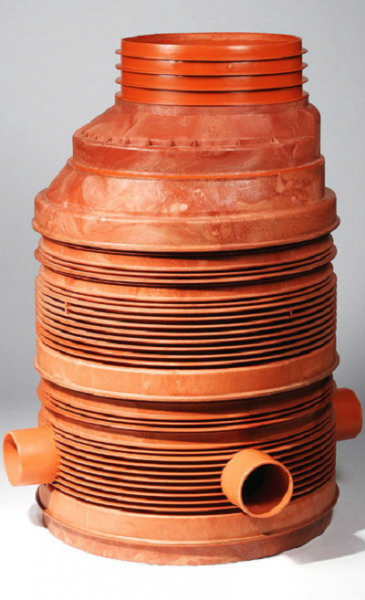
From distribution wells, water is directed to a collection tank. In the presence of a central storm sewer, storm flows can be redirected to the central highway or, as they accumulate, be pumped with a pump to a disposal site.
Distribution wells must be marked, capped and used to service rainwater harvesting systems.
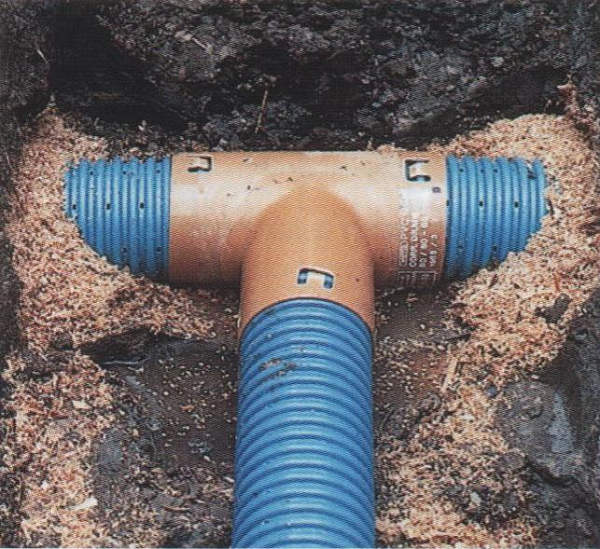
All elements of the storm sewer are interconnected by elastic couplings, tees and adapters, which allow connecting pipes of various diameters. This method of connection allows the entire structure of the storm sewer to be insensitive to mechanical stress, loads, subsidence and soil movements.
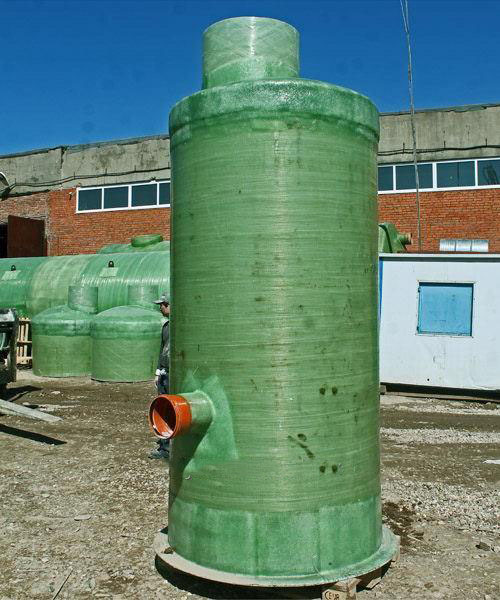
Conclusion
The use of plastic and polymer materials makes it possible to build a storm sewer with a large capacity, resistant to frost and corrosion. The service life of the elements of a properly constructed storm sewer can reach several decades, provided that the system is properly and regularly maintained.
Heavy downpours and spring thaw are a real problem for many homeowners. After all, the site after the rain turns into a kind of swamp, and regular flooding of the foundation and walls contribute to their destruction. And the reason for all these misfortunes is the absence or improper operation of stormwater. Consider the main points of the construction of such a device as a storm sewer - snip, GOST and other requirements that should be taken into account.
An example of a storm sewer on the site
What is a storm sewer? It is common to call storm sewers complex engineering schemes that serve to collect and remove moisture from the drained area, which falls in the form of precipitation. When constructing these schemes, one should be guided by the requirements of SNiP 2.04.03-85, this document discusses the construction of external sewerage networks. This regulatory document is mandatory for execution during the construction of new systems and during the reconstruction of the old one.
The SNP for storm sewers contains the necessary formulas for carrying out calculations when designing the system, indicates the requirements for materials, and the basic rules of operation.
Types of storm sewers
There are two types of stormwater:
- Point system.
- Linear system.
Let's take a closer look at these types of systems.
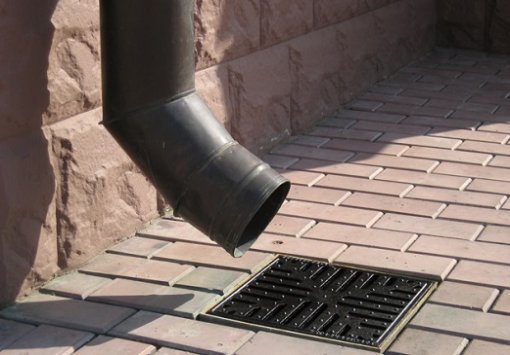 Spot storm sewer
Spot storm sewer Sewerage storm point type
Dot schemes are a network of special elements - storm water inlets, which are installed to collect rainwater flowing down a system of gutters from roofs. Each of the installed storm water inlets is connected to a common line, through which moisture is removed from the territory.
In order to assembled circuit was durable, safe and effective, specifications for storm sewers provide for installation on storm water inlets protective grilles, as well as the installation of special filters - sand traps.
Storm sewer linear type
As a rule, such a scheme is a network of channels that are designed to collect and transport water. Unlike the scheme described above, this option is designed to collect water not only from the roof, but also from asphalt and concrete sites and paths.
According to the requirement of the state standard - storm sewer is mounted with a slight slope towards the main collector. Such a system is necessarily equipped with a combination of filters that protect the channels from debris entering them.
Storm sewer elements
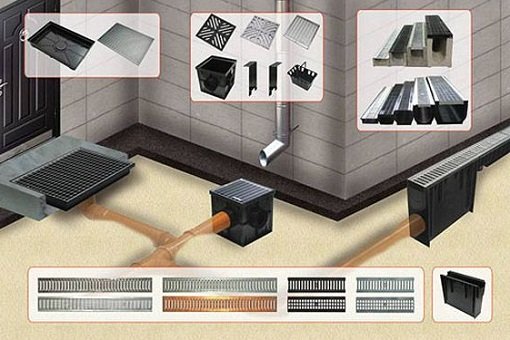
As a rule, the following elements are included in the sewerage scheme (in one combination or another):
- Storm water inlets. This is one of the important elements of the system, the main function of which is the local collection of water from the surface of the earth. These elements are installed under the roof drainpipes, on sites with a water-impermeable coating (there must be a slope to the location of the storm water inlet).
- Door pallets. This is an analogue of storm water inlets that are installed in front of entrance groups at home or at the gate.
- Trays or gutters. Elements installed in ditches to divert water. So that water can move along them by gravity, a slight slope of the storm sewer is provided, directed to the collector.
- Pipes. This element performs the same function as the trays, but is not laid in surface trenches, but underground.
- Sand traps. These are filter elements that prevent debris and soil particles from entering the drainage system.
- Viewing wells. Details necessary to control the operation of the system.
Calculation of storm sewers
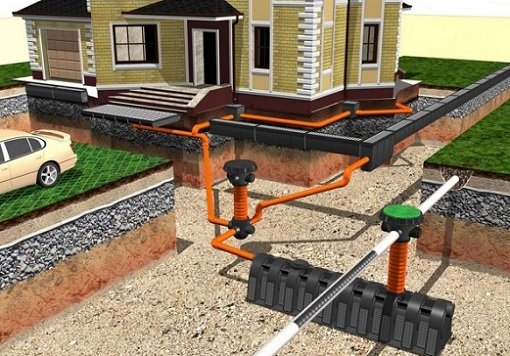 Stormwater scheme for calculations
Stormwater scheme for calculations To make the correct calculation of storm sewers, you need to know:
- The average amount of precipitation that falls in a given area.
- frequency of precipitation.
- The runoff area, that is, the area of roofs, platforms and paths with a waterproof coating.
- Soil properties at the site.
- Locations of already built underground utilities on the site.
You can calculate what the diameter of the storm sewer should be using the formula:
Q = q20 x F x Ψ
Designations in the formula:
Q is the volume of water that the system will have to divert.
q20 is the intensity of precipitation.
Advice! This value depends on the climatic conditions of the area, you can find its value in the tables according to SNiP 2.04.03 - 85.
F is the area of surfaces from which water is planned to be drained.
Ψ is a correction factor that depends on the coating material of the site from which water is collected.
Advice! The correction factor for the roof is 1.0, for sites and paths covered with asphalt - 0.95, for concrete pavement- 0.85, for crushed stone coatings - 0.4 (and if crushed stone is treated with bitumen, then the coefficient will be 0.6).
After the calculation is carried out according to the tables given in the regulatory documents, the required pipe size is determined.
At what depth should pipes be placed when building storm sewers?
The question of what should be the depth of storm sewers is widely discussed on construction forums. Meanwhile, a completely understandable answer is given in SNiP 2.04.03-85 - the minimum depth of storm sewers is determined by the experience of operating systems in a given area.
Advice! Typically, when used in middle lane and the use of pipes with diameters up to 500 mm, 30 cm is taken as the minimum depth. In the event that pipes of a larger diameter are used for the construction of a system such as a storm sewer, their laying depth should not be less than 70 cm.
In practice, the depth of the pipes is determined based on the need to reduce the volume earthworks, but at the same time, exclude the possibility of damage to pipes due to external influences, as well as minimize the risk of freezing.
Slope of storm pipes
In order to find out minimum slope storm sewers, you need to consider:
- Type of drainage;
- Pipe diameter;
- Surface coating.
Advice! When using pipes with a diameter of 200 mm, the slope should be from 0.005 to 0.007. If pipes with a cross section of 150 mm were used, then the slope should be 0.007-0.008.
Storm sewer construction
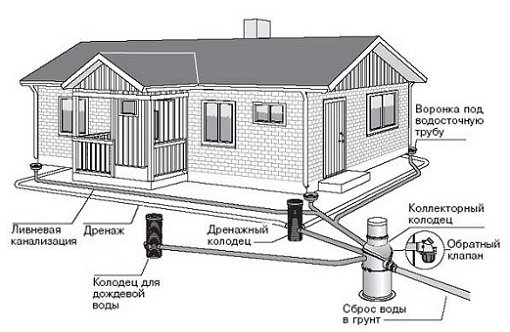
In general, installation work on the installation of storm drains is carried out in the same way as when laying external pipelines of a conventional sewer.
Installation of the roofing part
This part of the work goes like this:
- Openings are made in the ceilings for the installation of storm water inlets, all connections are carefully sealed.
- Branch pipes are strengthened during the construction of a point system or trays - during the installation of a linear storm drain.
- Install waste risers or pipes.
- A water discharge unit is assembled into a collector or outlet into tray systems.
- All devices are attached to walls and floors with clamps. Places for installing clamps are planned in advance, not forgetting to observe the recommended slope values.
Underground laying
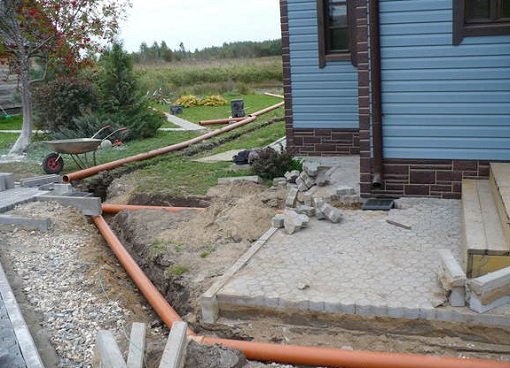
- Installation begins with the installation of trenches. During the construction of systems such as storm sewers, the depth of laying is most often determined not by the depth of freezing, but by the experience of operating systems at the construction site.
- Trenches are dug with a slope, and their bottom is well compacted.
- If solid inclusions (stones, hard lumps of soil) are found at the bottom, they should be removed, the holes formed should be covered with soil and compacted again.
- At the bottom of the trenches, a sand cushion is made, the layer height is 20 cm.
- A pit is being prepared for the installation of the collector. Today it is much more convenient to use ready-made plastic wells than to build a collector yourself.
- Pipes should be laid in the prepared ditches, the pipes are connected to each other and connected to the collector using conventional fittings.
- If the sewer network consists of a single branch with a length of more than 10 meters, then in its middle it is worth planning the installation of a manhole. Such wells should be placed at the branching sites of networks.
- From those sides of the house where there is no drainage systems(for example, on gable roof the drain is provided only on two sides, and two more remain free), it is planned to install water intake gutters. They are mounted in shallow trenches (30-50 cm).
- Sand traps are installed at the junction of the water intake gutters and the stormwater pipe system.
- Before digging trenches, the system should be tested. To do this, a bucket of water is smoothly poured into each of the storm water inlets and into the gutters. Now you need to make sure that the moisture easily leaves and does not stagnate. Also, you should pay attention to the tightness of the pipe connection, especially those that are located near the foundation.
- Now it remains to backfill the trenches, and cover the trays or gutters from above with bars.
The need to create security zones
Construction and sanitary rules provide for the creation of special security zones in the area where pipelines are located. So, the security zone of the storm sewer provides for an indent from the walls of the pipe in each direction by 5 meters.
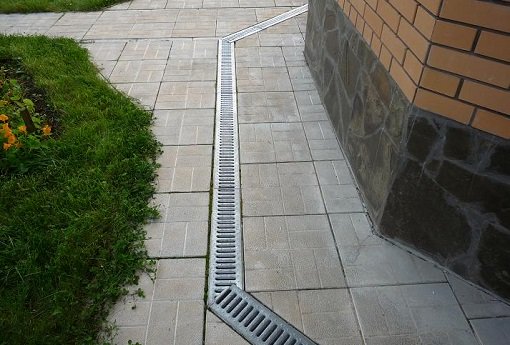 Ready storm sewer on the site
Ready storm sewer on the site IN security zone prohibited:
- Build permanent or temporary structures.
- Set up garbage dumps.
- Arrange parking lots.
- Plant trees or bushes at a distance of less than three meters from the pipe.
- Block free access to manholes.
So, the installation of a rainwater drainage system is a necessary measure for the improvement of the site. When constructing such systems, it is necessary to strictly comply with the requirements and rules that are formulated in regulatory documents - construction and sanitary rules.
- The principle of operation of storm sewers and its purpose
- Requirements for laying system elements
- How to properly design a storm sewer open and closed type
- Preparing for installation and laying the system with your own hands
- Installation instructions for closed-type storm sewers
- Recommendations for the installation and maintenance of storm sewers
Storm sewage is a complex that includes channels and devices that allow the collection and removal of excess rain and melt water outside the drained area. Effluent is preliminarily filtered, and then they must be collected in a collector well. From it, effluents enter the loading points. Further collection of atmospheric moisture is carried out on filtration fields, in special reservoirs, reservoirs.
Accumulations of garbage from the sewer must be periodically removed, which requires the cleaning of the linear network, which is a storm sewer. These steps are not difficult to do on your own. Cleaning can be done by using the services of a specialized company. At the same time, it is important to know how the stormwater system works, what elements are included in it, what technical requirements are imposed on the equipment in the storm sewer complex.
The principle of operation of storm sewers and its purpose
The storm sewer device includes a complex of device channels that serve to remove excess moisture, which creates discomfort and destroys structures. It consists of the following standard elements:
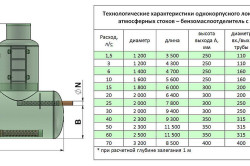
- Rain inlets in the form of funnels.
- Pallets.
- Linear trays for collecting water.
- Gutters.
- Pipes.
Specifications require the equipment of raincoats with sand traps or filtration devices, as well as gratings. This prevents suspended soil particles or debris from entering the storm sewer system.
All elements of storm sewers are combined into common system according to technology, which can be of two types: point and linear. The choice of one or another scheme depends on the method of collecting wastewater. If the laying of stormwater channels is carried out in the ground, then pipes are used. Plastic, concrete or asbestos trays and gutters are used to equip surface ditches, arranging internal and external drains that form a point system.
Back to index
Requirements for laying system elements
There are certain requirements for how elements are laid, for example, trays, sewer pipes or gutters. It is necessary to observe the slope when laying the listed elements in the direction of the catchment structures, as well as loading points. The device of storm water inlets for storm sewers is made under the drain, and it is necessary to equip the water-receiving funnel using a filter mesh. However, an inner basket will be required for collection. Another way to install storm water inlets involves observing the following scheme for installing elements:
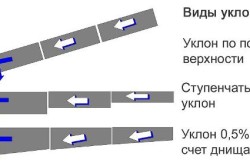
- On the right is a chute and a sand trap.
- In the center is a funnel for receiving water from the drain.
- On the left is the door tray.
Linear type stormwater is a network of channels that are laid underground or in shallow trenches. Trays designed to collect and move water are laid open way. At the same time, they are equipped not only with gratings for storm sewers, but also with sand traps. Lattices are installed along the entire line. For the purpose of drainage, more elements are involved in a linear type sewer than in a point scheme. Therefore, the collection of water is carried out with roof gutters, and from platforms, paths that can be paved with brick for the sidewalk or covered with concrete.
A linear type storm sewer scheme allows you to cover a large area. Drainage can be carried out both from sidewalks and from landscaped areas. If the specificity of the pitched structure does not provide for the presence of drains, then the drains are diverted from certain sides of the house.
The type of system chosen will depend on the degree of coverage of the area. But these selection criteria are not fundamental. A do-it-yourself storm sewer is arranged in the country with a certain experience related to the organization and operation of complexes of this type. At the same time, it is important to determine not only the type of channeling, but also the depth of their laying.
Back to index
How to properly design an open and closed storm sewer
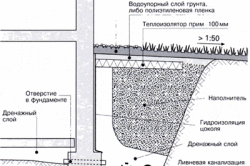
An open type of storm sewer is called a linear one, since water must flow over the roofs to a certain place.
You can install an open sewer if you use gutters made of concrete, metal or plastic. To protect the sewer from pollution, grates should be put on the gutters, which perform an aesthetic function. To prevent soil shrinkage, it is necessary to provide for a slope by making channels under the gutters. You can equip the channels using waterproof sealants.
Calculation of closed-type storm sewers:
- Determine the characteristics of the territory and landscape features.
- Provide for the presence of architectural structures around the house in the summer cottage.
- Calculate the average degree of precipitation.
- Deal with the placement of technical facilities.
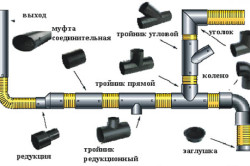
After that, preliminary drawings should be prepared, which will indicate the layout of pipes and places for installing equipment, calculate the depth of the storm sewer. Designing a closed storm sewer will require the preparation of the following documents:
- Information about the project.
- Sewerage scheme.
- preliminary drawings.
- Work report.
It must be remembered that the operation of any sewage system will be of high quality if all equipment and sealants are of the appropriate quality. Preventive cleaning of storm sewers should be carried out at least once a year, which will prevent clogging of water inlets and trays.
Back to index
Preparing for installation and laying the system with your own hands
The materials used in the process of performing work must be waterproof and anti-corrosion. Corrugated pipes they are not suitable for such sewage, so it makes no sense to use them because of the imminent clogging. Should not be used complex schemes, determining the location of the pipes. When laying pipes, do not make additional wiring and turns. Connections structural elements must be sealed. Having prepared the installation scheme, it is necessary to calculate the footage of pipes and other required elements. System protection and high-quality cleaning of storm sewers involves the installation of two additional wells. Pipe cleaning is carried out with a metal cable.
The technology for installing gutters on the roof of a house is as follows:
- Prepare special holes for mounting storm water inlets.
- Install elements with subsequent sealing of all joints.
- Install pipes to drain water.
- Strengthen all devices and elements with clamps to the roof and walls of the building.
Back to index
Installation instructions for closed-type storm sewers
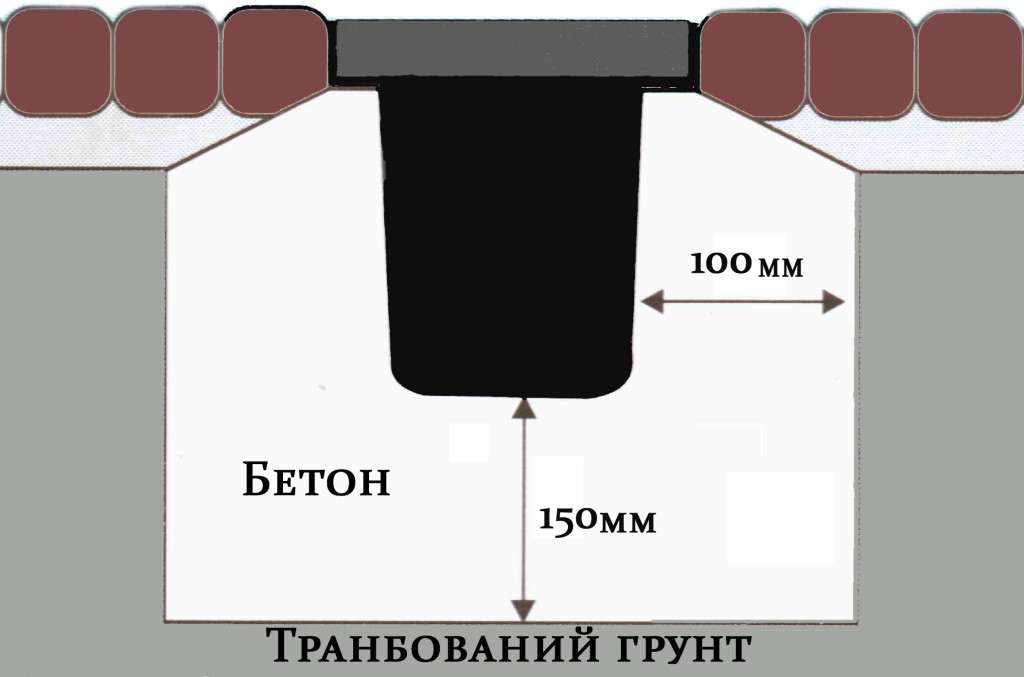
For the purpose of arranging closed system storm sewers adhere to the following actions:
- having approved the installation scheme, they mark the territory using the designations of preliminary sewerage installation sites;
- dig holes, tamping their bottom and filling it with sand by 15 - 20 cm;
- insulate trenches with geotextiles, if necessary;
- prepare a pit for the collector by digging a hole and filling it with concrete using metal rings or a plastic container.
To create a pit, you can use a factory well placed in a prepared pit. To make work easier, we use plastic pipes and fittings. Pipes are laid in trenches dug in advance. Then they are connected to the trays and the collector. A manhole should be located for every 5 m of sewage. In places where there is no water intake, a gutter is installed, covered with a grate. The sand cleaner must be located between the chute and the tray. This ensures that purified water flows into the system.
When the whole system is already assembled, you can start testing it. This will reveal the performance of the design. 10 liters of water are poured into all water intake wells that are installed. Next, you need to determine how quickly water leaves the system and in what quantity. At a sufficiently fast speed, the volume of outflowing water will be equal to the volume of incoming water. This means that the system was assembled with high quality and all work was done correctly. In the future, it will function correctly.
Back to index
Recommendations for the installation and maintenance of storm sewers
When performing a sewerage device, you should use PVC pipes with a diameter of 110 mm, which are connected by a double coupling. If pipes with maximum strength are used, then their depth should be greater. If the site has drainage system, then a storm drain is arranged above it. To insulate pipes with less strength, laid at a shallow depth, geotextiles and crushed stone are used as a heater.
The scheme for arranging a storm sewer at home should provide for its connection to the irrigation of the site or the water supply system.
If there is a reservoir near the summer cottage, then the collector should not be installed. The system is arranged so that water can enter the reservoir.
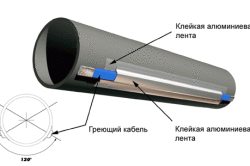
Sewer maintenance involves the use of appropriate cleaning methods:
- Mechanical.
- Vodyany.
- Thermal.
- Chemical
The mechanical method involves the removal of contaminants, plugs or sand. Water is based on the use of a jet of water that breaks through plugs. Thermal is associated with the use of water, which has high temperature. Chemical involves cleaning the sewer with the help of reagents. The external system located on the roof is associated with the use mechanical way. For this purpose, gutters and water inlets for garbage collection are inspected. Cleaning of storm water inlets is carried out using the water method, when a jet of water is directed to the gratings under maximum pressure.
Opportunity correct operation the sewer system is determined primarily by the depth of the sewerage and the system as a whole laid down in the project. Also, the depth of laying sewer pipes directly affects the cost of laying and building sewer networks.
Therefore, the best and most expedient way would be to lay sewer pipes at depths that satisfy the minimum technical requirements for this area.
In general, a certain one is needed only in order to avoid its freezing in winter and various mechanical damage from the outside.
Your attention!
The depth of sewerage should be calculated based on the experience of systems in this particular area. It is necessary to reduce the laying depth only if the sewer pipes can be insulated.
If there is no experience in the operation of sewerage in this particular area, then the depth of the laying should be calculated according to the following method:
- Take pipes with a diameter of up to 5 cm
- Lay them to a depth of 0.3 m
- For pipes with large diameters- to a depth that is 0.5 m lower than the depth of soil freezing in this particular area.
- In this case, it should be taken into account that the distance between the top of the pipe and the layout mark was not less than 0.7 m.
- In order to avoid damage to sewer pipes by mechanical vehicles, it is necessary that the depth of the sewer pipes be calculated in such a way that there is at least 1.5 m of soil to the top of the pipe.
- The smallest depth to which the collectors must be laid must be determined by static and thermal calculations.
In order to most accurately and reliably determine at what depth to lay sewers, you need to find out what is the depth of soil freezing in your area of \u200b\u200bresidence.
About the depth of soil freezing in your area, you can use many regulatory documents, among which there are, for example, SNiP 2.01.01-82 “Building climatology and geophysics”. There is a detailed map with soil freezing zones in certain areas.
For example, you can cite several cities. For Moscow, the depth of soil freezing is 1.4 meters, for St. Petersburg this depth is 1.2 meters, but for Sochi it is generally less than 0.8 m.
Let's check on an experimental example at what depth sewerage should be laid in Moscow.
For this:
- Take a pipe with a diameter of 200 mm
- Subtract 0.3 meters from the freezing depth
- After carrying out simple mathematical calculations, we get that the depth of laying a sewer pipe for Moscow will be 1.1 meters.
This is exactly what all major organizations do.
In fact, everything is not so rosy. Pipes are laid in accordance with all the above norms and rules only if the building or structure is a serious, state, capital and expensive structure.
Here, no money will be spared for this: they will conduct both state and non-state examinations, hire serious designers, builders and installers.
Another thing is when it comes to what is actually the depth of the sewer in most private houses. Most homeowners have small treatment facilities in their country houses or dachas of the type and likeness of Topas, Biofluid and others.
The instructions for such systems are written clearly and clearly: the depth of the sewer pipe must be within 0.5 meters. Otherwise, the pipe simply will not fall into the drain hole of the treatment plant.
For such cases, SNiP has a separate clause. It states that pipelines and sewer pipes laid to a depth of less than 0.7 m must be protected from damage by land transport and freezing.
In practice, none of the above is usually done. Installers assure gullible people that nothing will freeze in winter, referring to their “great experience in maintaining installation work in the Far North".
This determines the theme of filling in the winter of numerous construction and installation forums dedicated to “what to do if the sewer pipe is frozen and the drain does not work?”
Separately, it should also be said about storm sewers.
Why do we need a rain (storm) sewer? At certain times, especially in spring, there is so much rain and melt water after the snow melts that they can seriously flood yard areas, summer cottages and even large areas of various bases, plants, factories, etc.
Therefore, to discharge unnecessary meltwater into low areas of the area or into nearby water bodies, there is a rainwater disposal system.
Features of designing a rain sewer system include elements such as:
- tracing
- Hydraulic calculation
- Designing and linking network elements
Tracing provides:
- Collection of melt and rainwater from the designated area
- Their removal to the nearest places of treatment or release
So, the depth of storm sewers, as well as household sewers, is calculated based on the minimum prescribed pipe laying depth in this area, according to the experience of previous laying or the experience of using sewer networks.
The location and distance of manholes in the collectors is set similarly to household sewer network. Initially, the depth of the collectors under the roadway should be at least one and a half meters.
This need is necessary in order to avoid crushing the collectors with heavy equipment. Well, taking into account the fact that in the future it is possible to build an intra-quarter network, the depth of laying storm sewers should be at least 2 meters.
It must be taken into account that for each area it is necessary to carry out a comprehensive survey, taking into account various parameters, such as the depth of soil freezing, soil properties, etc.
Having chosen closed-type drainage systems for draining rain and melt water from the site and the roof of the house, you often face the question of where to start and how to calculate the amount of work associated with laying pipes. First you need to sketch a withdrawal scheme Wastewater in the vertical plane.
Ideally, the depth of the storm sewer should not be higher than the depth of soil freezing by the diameter of the pipe itself. Moreover, when digging a trench, one must also take into account the thickness of the sandy compacted cushion, which serves as the base of the entire highway and compensates for seasonal soil displacements. However, in practice, this amount of work is quite difficult to perform.
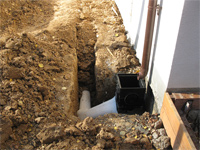
In some places of the site, a ditch one and a half meters deep is simply unrealistic to dig. In addition, if closed-type stormwater is used, then the territory has an uneven terrain. But all the pipes with a slope eventually converge into one common drainage system directed to the collector. It turns out that some of them should lie 1.5 meters below ground level, others 2, etc.
And what happens if you lay pipes right at the surface? Storm sewerage, although it is made of the same materials as the outer part of the centralized one, radically differs in the temperature of wastewater in the autumn-spring period and the frequency of their descent. Sewage from the house when draining always has room temperature and due to regular descent at a distance of up to 5 meters from the building, they partially warm up the soil around the pipe.
It is frosty outside and the soil temperature of the site is a dozen or two below zero. The sun warmed up, and streams ran from the roof, but where to? Right in the freezer! So it turns out that all closed drainage systems are easier to insulate than to drive a couple of meters underground.
Heaters for sewer pipes are different both in structure and in cost, but most importantly, in terms of durability, because they lie in the ground. The most unsuitable for insulation will be mineral wool, even if you design a special box for it, which in itself will not last long in constant dampness.
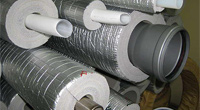
Polyurethane - more suitable option parts made from it are easy to put on pipes. Due to the thickness, it practically isolates them from external temperature changes.
The shell made of foam or expanded polystyrene, specially made for different diameters, consists of two halves and has locks, which is very convenient. Warming with such elements can be done very quickly and efficiently.
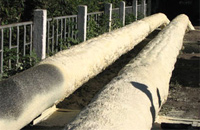
Penoizol - even more original version, insulation in ready-made has no seams, since it is poured with liquid reagent into a pre-prepared ditch with a pipe inside. True, not every site can be visited by a filling machine, which is also worth considering.
Foamed polyethylene is a widely used material that has long won the general recognition of the people. However, it is better not to use it for warming the stormwater, it is painfully short-lived in the harsh conditions of climatic changes.
Summing up all that has been said, it is better to calculate the optimal depth of storm sewers not from the thickness of the soil freezing, but from the general slopes, their length and the terrain in a particular place. In any case, the distance from the surface of the earth to the pipes should not be less than 30 cm, so as not to accidentally touch the insulation with a shovel. And it is strictly necessary to insulate the entire route, manholes and vertical sections from storm water inlets.








